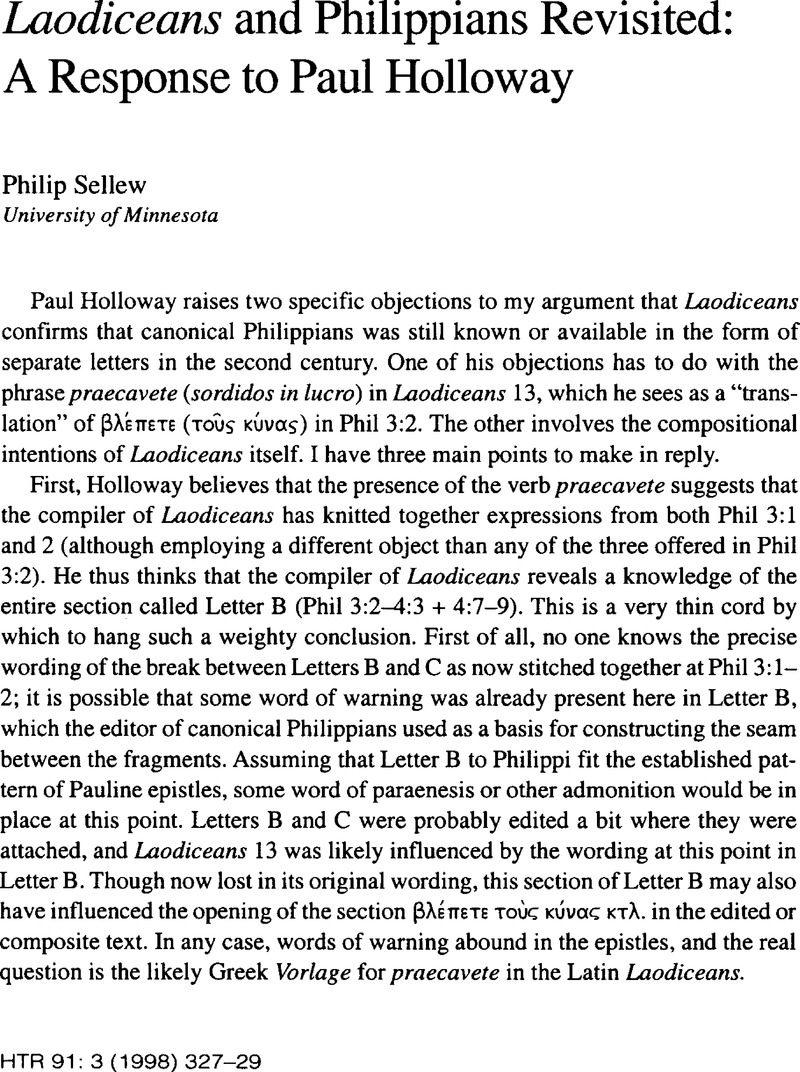Article contents
Laodiceans and Philippians Revisited: A Response to Paul Holloway
Published online by Cambridge University Press: 10 June 2011
Abstract

- Type
- Notes and Observations
- Information
- Copyright
- Copyright © President and Fellows of Harvard College 1998
References
1 He writes: “et quod… in Christo obviously translates Phil 3:1a, with dilectissimi substituted for άδελΦοί and in Christo for έν κυΡίΨ. Likewise, praecavete translates the άδελΦοί /µου of Phil 3:2” (, Holloway, “The Apocryphal Epistle to the Laodiceans and the partitioning of Philippians, HTR 91 [1998] 321–25CrossRefGoogle Scholar.
2 Verbs like Фuλάοоεσθаί and άΥρυπνείν are also frequently followed by same particles. G. D. Kilpatrick lays out the evidence on βλέπειν in his brief article “ΒΑΕπΕΤΕ Philippians 3:2,” in Black, Matthew and Fohrer, Georg, eds., In Memoriam PaulKahle (BZAW 103; Berlin: Töpelmann, 1968) 146–48;Google Scholar cf. BAGD 143b s.v. βλέπω. Thus Phil 3:2 would mean something like “Look at (or See) the dogs! Look at those evil workers!”
3 , Holloway, “Apocryphal Laodiceans and Partitioning Philippians,” 323 n. 7Google Scholar.
4 My thanks to Paul Holloway for his interest in my proposal, and to the editors of the HTR for providing me space for this response.
- 1
- Cited by


